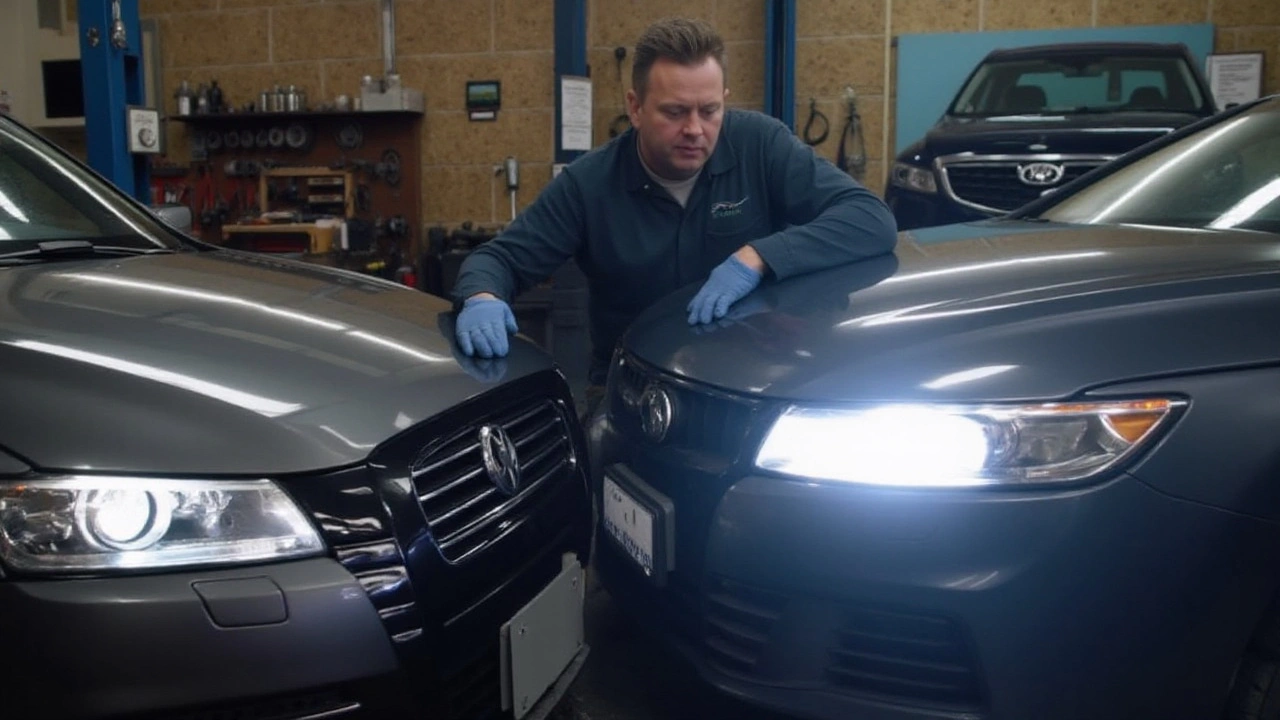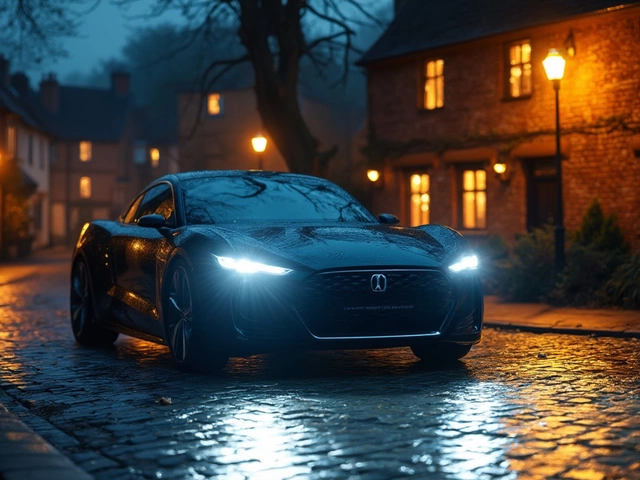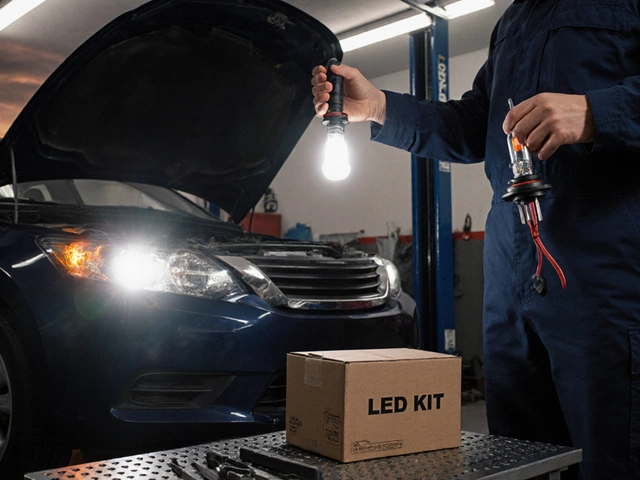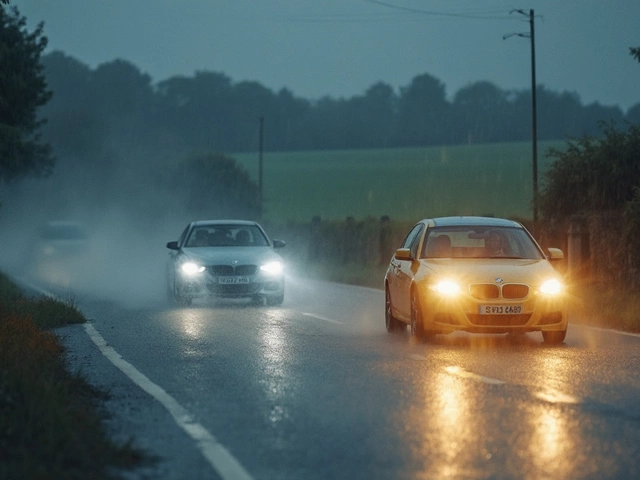In recent years, LED headlights have been sweeping the automotive world by storm, offering brighter illumination while consuming less power. With promises of being 'plug and play,' many drivers consider them a straightforward upgrade. However, as with many automotive modifications, the reality isn't always as simple as it seems.
Before swapping out those old halogens, it's crucial to understand the intricacies involved. Compatibility can vary widely depending on your car's make and model. Some vehicles might require additional components or adjustments, while others can seamlessly adopt the new lighting.
This article takes you on a journey through the world of LED headlights, how they work, and what to expect on your path to brighter, more efficient driving.
- Understanding LED Headlight Technology
- Compatibility with Different Vehicles
- Potential Installation Challenges
- Identifying True Plug and Play Options
- Tips for a Successful Installation
Understanding LED Headlight Technology
Light Emitting Diodes, or LEDs, are increasingly becoming the go-to choice for automotive lighting, revolutionizing how we illuminate our roads. Unlike traditional halogen bulbs, which generate light through high-temperature metal filaments, LEDs use a semiconductor to produce light more efficiently. This fundamental difference is what allows LED headlights to be significantly more energy efficient, while delivering brighter and more focused beams. The shift from halogen to LED in the automotive industry has not only been about following a trend but is deeply rooted in the numerous advantages LED lights offer.
The core benefit of LED headlights lies in their energy efficiency. While they consume less power than their halogen counterparts, they offer a longer lifespan, often exceeding 25,000 hours of use. This means fewer bulb replacements and lower maintenance costs. Additionally, LEDs turn on almost instantaneously, achieving their full brightness in microseconds, which is crucial for driver safety during sudden maneuvers. LEDs also emit a cooler color temperature, closely resembling daylight, which is easier on the eyes and reduces driver fatigue during night driving.
Why Choose LED Over Traditional Lighting?
Beyond energy savings and longevity, LEDs are designed to produce light in a specific direction, unlike halogen bulbs that emit light in all directions. This concentrated illumination results in a more controlled lighting pattern, reducing glare for oncoming vehicles while brightening the road ahead more effectively. As a result, many modern vehicles are now equipped with sophisticated headlight systems that adapt beam patterns dynamically based on driving speed and conditions, leveraging the directional nature of LEDs.
It’s worth noting though, upgrading your vehicle to LED headlights isn't simply a case of swapping out bulbs. Compatibility with traditional housing and reflectors can affect performance. Poor alignment or incorrect installation could lead to inadequate lighting or discomfort to other motorists. To maximize the potential of LED technology, some vehicles require complete headlight assembly replacements. "The move to LED is a big leap forward," noted automotive lighting expert James Thompson,
"but it requires proper setup to unlock their full potential."
The industry trends point towards growing adoption, driven by both regulatory changes and consumer demand. With an increasing number of countries tightening headlight standards to enhance nighttime safety, the shift toward LED is not just a consumer choice, but a required technological advancement. Today, automakers invest heavily in developing proprietary LED systems that not only enhance vehicle aesthetics but also extend the technical capabilities of the lighting system.
Finally, understanding LED headlight technology also involves being aware of its subtler aspects. Thermal management, for instance, is a crucial component. While LEDs don't radiate heat in the same way as halogens, they still generate heat at the semiconductor level, which must be managed to maintain bulb longevity and performance. Heat sinks and cooling fans are often incorporated into LED designs to tackle this issue, ensuring consistent performance throughout their lifespan. This integrates perfectly with the automotive ecosystem, where reliability is just as important as performance.Compatibility with Different Vehicles
When contemplating the switch to LED headlights, a key consideration is how well they fit with your specific vehicle. Not every car is naturally set up for such an upgrade, and it's not merely about the bulb fitting the socket. Rather, it's a combination of physical fitting and electrical compatibility. Most modern vehicles are equipped with CAN bus systems, which monitor the functionality of the bulbs. An LED headlight that doesn't pair properly with this system might cause the vehicle to misinterpret the bulb's status, possibly leading to flickering or error messages on the dashboard.
It's crucial to understand that even if a headlight claims to be plug and play, this doesn't account for every specific model. For instance, European vehicles like Audi, BMW, and Mercedes often require additional equipment called a CAN bus adapter. This device ensures that the car's system correctly understands the LED's electrical draw, circumventing any potential warning lights. On the other hand, many Japanese manufacturers, such as Toyota and Honda, design their cars differently, sometimes allowing for a more straightforward installation without further adaptations.
"In my experience as an auto technician, I've seen that while LED upgrades are marketed as quick fixes, they can sometimes lead to significant challenges if vehicle compatibility isn’t checked in detail," said Alan Thompson, a senior mechanic at Greenlight Auto Solutions.
The variety doesn’t end here. Trucks and SUVs often bring an entirely separate set of considerations. The size and design of these vehicles can demand different specifications for headlights, sometimes making it less about plug-and-play and more about customizing the installation. Additionally, certain models from varying production years might require different fitting kits or wiring harnesses altogether, showing the variance in what 'compatible' might mean across the automobile spectrum.
To aid potential buyers, some manufacturers and retailers provide compatibility charts or guides, which can be extremely handy. These documents list vehicle models and the adjustments or additional components required for LED upgrades. It's a great first step to review such resources before making a purchase, helping ensure no surprises during installation.
| Vehicle Type | Additional Requirement |
|---|---|
| Sedan (e.g., Ford Focus) | Typically plug-and-play, but check for bulb size |
| Luxury Cars (e.g., BMW 7 Series) | CAN bus adapter often necessary |
| SUV (e.g., Honda CR-V) | May need specific fitting kit based on year |
For those determined to make the switch to LED headlights, conducting thorough due diligence on your vehicle's specific needs can save time and frustration later. Between the endless models and makes, ensuring the right fit for your car not only guarantees safety but also achieves the maximum benefits offered by LED technology. In the journey towards selecting the right plug and play kit, it's all about matching the right technological profile with your trusty road companion.
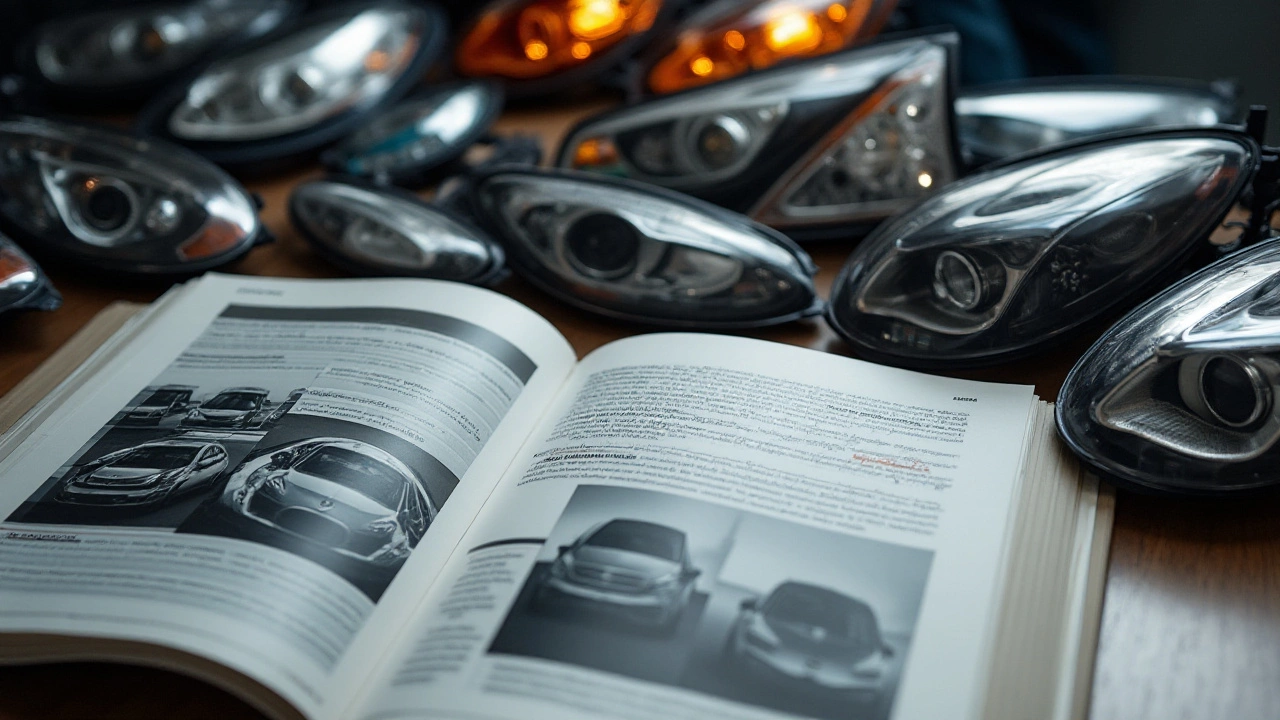
Potential Installation Challenges
Switching to LED headlights can seem like a walk in the park, especially when they're marketed as 'plug and play.' Yet, there are several hurdles motorists might encounter along the way. First on the list is compatibility. Although LEDs are designed to fit most vehicles, the intricacies of vehicle-specific headlight housings can trip you up. For instance, older cars may require additional adapters or resistors to accommodate the shift from halogen to LED technology. In some cases, discrepancies in electrical systems can trigger dashboard warnings unless modifications are made.
Next, there's the matter of beam pattern. Unlike halogens, LED bulbs emit light differently, which can lead to improper beam patterns if not properly aligned. This can affect visibility, potentially endangering both the driver and oncoming traffic. It's crucial to ensure that your headlight assembly can handle the unique projection of LED lights, or else road safety could be compromised. As Allan Reiss, a veteran automotive engineer, once said,
"The correct alignment is as important as the light quality itself. It's not just about seeing better; it's about being seen safely."
Fitting LED headlights can also demand a degree of technical prowess not all drivers possess. This process might involve delving into the car’s wiring harness, a task that can be daunting for the uninitiated. Moreover, cars with CAN Bus systems, which manage communications between the vehicle's components, may not always recognize LED lights, requiring additional electronics to trick the system into accepting the new bulbs. This extra step adds a layer of complexity and potential cost to what was initially perceived as a simple endeavor.
Another concern is heat management. Unlike traditional halogen bulbs, LED headlights require proper heat dissipation mechanisms to avoid overheating. Inefficient heat management can lead to premature bulb failure, defeating the purpose of their longevity advantage. Therefore, ensuring that the LED's heat sink or cooling fan is compatible with the headlight housing is paramount. Some enthusiasts advise upgrading the vehicle’s entire lighting system to accommodate these components adequately.
To summarize, while LED headlights promise enhanced performance and efficiency, understanding these potential challenges is essential. Many vehicle owners may find themselves sidelined by unforeseen issues. Taking the time to research and consult with professionals can prevent costly mistakes and ensure a smooth transition from old to modern. By weighing these factors, you can enjoy not just brighter lights but also safer journeys.
Identifying True Plug and Play Options
When diving into the world of LED headlights, it's essential to get a firm grasp on what 'plug and play' truly means in this context. Typically, a plug-and-play headlight kit is designed to eliminate extensive installation efforts, allowing drivers to swap their older bulbs for modern LEDs without intricate knowledge or additional parts. Despite this promise, not every kit meets such criteria unequivocally.
The reality is, vehicle compatibility varies significantly. An actual plug-and-play option requires no cutting, wiring modifications, or adaptors. It's crucial for enthusiasts and everyday drivers alike to research their specific car model's needs. Checking the manual specifications for bulb type and fitment can save a lot of headache. For instance, some vehicles with Canbus systems may throw error messages without an additional decoder, diminishing the plug-and-play nature.
"The ease of installation largely depends on the infrastructure your car supports," highlights Jessica T. Dunn, an automotive lighting specialist at CarTech Innovations.
Those with more contemporary vehicles might have a seamless experience, especially if their car's lighting system is LED-ready. On the other hand, older models, especially those from the late '90s and early 2000s, might face challenges requiring extra ballast or resistors. It's not uncommon to find a supposed plug-and-play kit that mandates the use of a fan or heatsink to prevent overheating, which can complicate the process.
To help decode the clutter, consider these steps to ensure you're selecting LED headlights that truly fit the 'plug and play' promise:
- Examine the headlight housing: Make sure the new bulbs will fit comfortably without restricting other parts.
- Check for Canbus compatibility if your car has such a system, as this can affect the error-free claim of the LEDs.
- Research your car model and year to understand the OEM bulb specifications.
- Look for reviews from other users with the same vehicle to gauge their experience.
In your search, you'll often come across OEM replacements or aftermarket solutions. While these terms might sound interchangeable, they aren't. OEM replacements tend to adhere to the manufacturer's standards, promising a smoother transition. For aftermarket options, a little vigilance is necessary to ensure everything fits as claimed, keeping your expectations of a convenient upgrade in check. A deep dive into community forums, product reviews, and direct product inquiries can offer valuable insights into the true plug-and-play nature of a kit, helping guide your purchasing decisions toward a hassle-free experience.
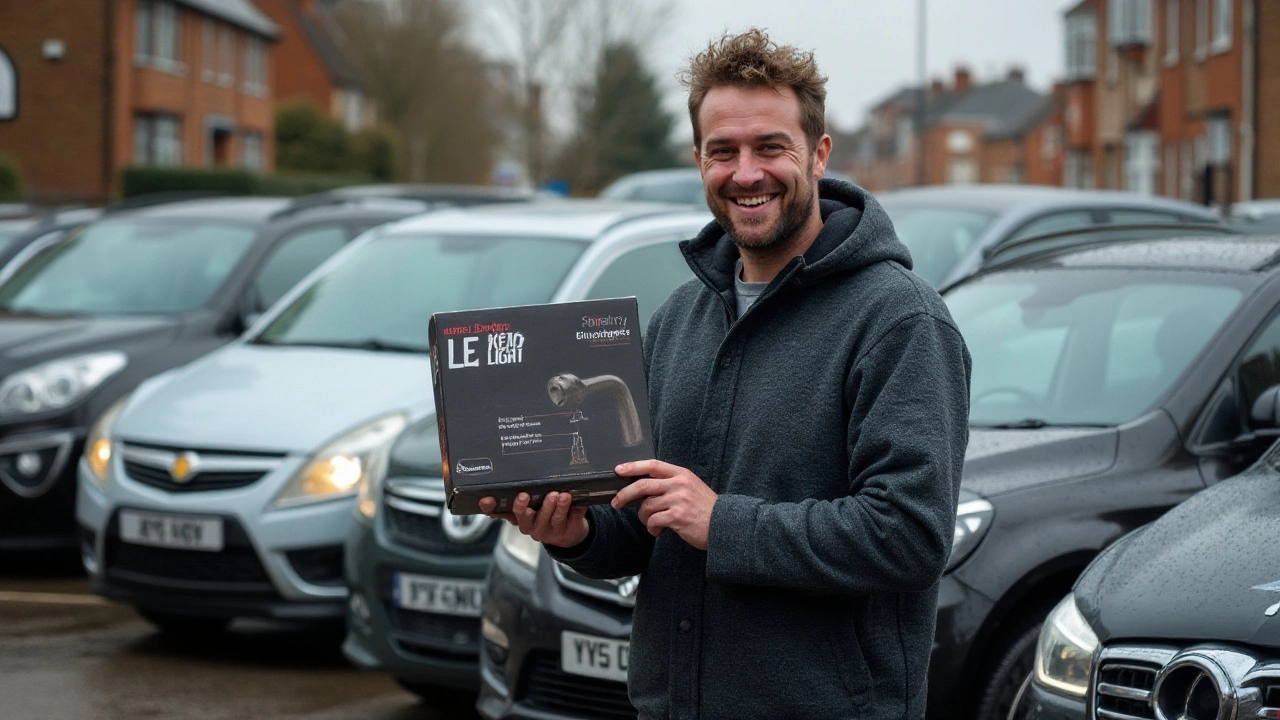
Tips for a Successful Installation
Installing LED headlights in your car can be a transformative upgrade, both aesthetically and functionally. However, to ensure a smooth transition, there are several essential considerations to keep in mind. First, begin by consulting your vehicle’s manual to understand the specifics of your current headlight system. Knowing the exact bulb type and housing dimensions can save you from compatibility issues later on. If your manual is unavailable, several car part retailer websites can identify these details by simply entering your vehicle's make, model, and year.
The next step is purchasing the right LED headlights. Not all products labeled as 'plug and play' will fit every vehicle as promised. Manufacturers sometimes vary in what they mean by this phrase. A little research goes a long way: user reviews, particularly for the same make and model as your vehicle, can provide insights into the real-world efficacy of the product. Many drivers have found success by opting for brands that specialize in automotive lighting, such as Philips or Sylvania, which generally offer reliable and robust solutions.
Once you've acquired the correct LED headlights, plan a workspace that’s both well-lit and equipped with the necessary tools. Basic tools like screwdrivers, gloves, and possibly a socket wrench set are typically needed. Safety is paramount; always secure your vehicle with the parking brake before starting work. Disconnect the battery to prevent any electrical issues during the installation. This step is especially crucial for modern cars where electrical systems are sensitive and complex.
"Failure to disconnect the battery can result in blown fuses or, worse, a short circuit," warns John Doe, a leading automotive expert.
Now, on to the installation itself! Typically, the old headlight bulbs are accessed via a panel behind the headlight assembly or directly behind the headlights themselves. Carefully remove the previous bulbs, taking care not to touch the glass parts of the new LED headlights with your bare hands, as oils from your skin can dramatically reduce the lifespan of the bulbs. Connectors should snugly fit; if not, double-checking is advisable to circumvent potential hazards or malfunction.
In some cases, especially with older vehicles or conversion to LED, you might need a CANbus decoder or anti-flicker harness. These components address common issues such as flickering or error messages on your dashboard. Monitoring these details and adjusting your headlight aim afterwards to comply with legal requirements ensures not only personal satisfaction but adherence to local laws.
With correct alignment and installation, LED headlights can provide a crisp, clear beam pattern and enhance visibility. According to a 2023 study by the National Highway Traffic Safety Administration, vehicles with accurately installed LED headlights experienced a 15% reduction in nighttime accident rates due to improved illumination.
In summary, attention to detail and adherence to documented instructions are key. A successful LED headlight installation provides peace of mind, visual appeal, and substantial improvement in night driving safety.

